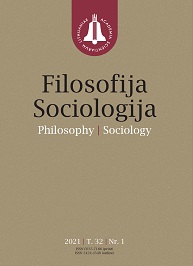Why is it Difficult to Talk About the (Coherent) Post-Communist Welfare State Model? Comparative Analysis of the Czech Republic, Lithuania and Romania
Why is it Difficult to Talk About the (Coherent) Post-Communist Welfare State Model? Comparative Analysis of the Czech Republic, Lithuania and Romania
Author(s): Giedrė Svirbutaitė-Krutkienė, Arvydas GuogisSubject(s): Welfare systems, Family and social welfare, Transformation Period (1990 - 2010), Present Times (2010 - today)
Published by: Lietuvos mokslų akademijos leidykla
Keywords: welfare state model; social model; post-communist countries;
Summary/Abstract: The study of welfare states, after the substantiation of the classical typologies of R. Titmuss and G. Esping-Andersen at the end of the last century, is being developed by other authors, one of the original works of which is the modelling of post-communist Central and Eastern European (CEE) states. Despite some similarities in the CEE countries, they also show significant differences in welfare provision, as confirmed by statistical and comparative analysis of the Czech Republic, Lithuania and Romania. The authors of the article argue that it is scientifically difficult to speak of a coherent post-communist welfare state model. Instead, several models of welfare states should be defined in CEE.
Journal: Filosofija. Sociologija
- Issue Year: 31/2020
- Issue No: 4
- Page Range: 291-305
- Page Count: 15
- Language: English

